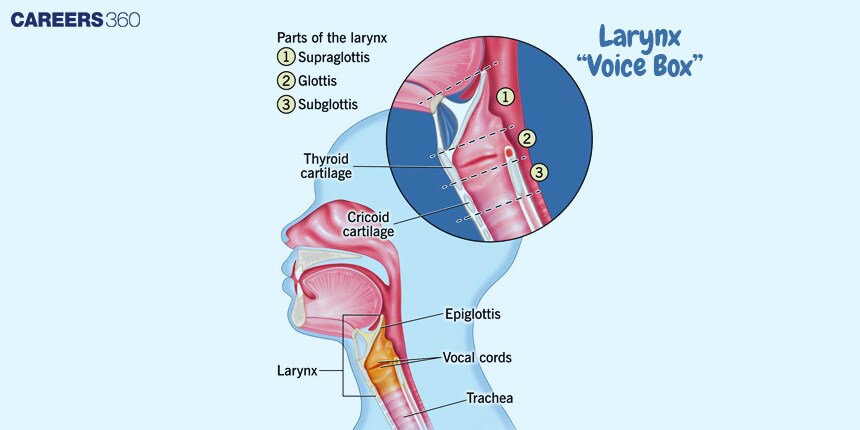Larynx: Structure, Function, Muscles, Symptoms, Causes & Treatment
What Is Larynx?
Situated in the neck, the larynx or voice box accounts for a very critical organ of the respiratory and vocal apparatus. From its anatomy, and physiological functioning to clinical features, this is indeed exhaustively covered by medical and biological literature.
Anatomy Of The Larynx
The larynx is formed from cartilages (thyroid, cricoid, arytenoid and epiglottis), membranes and ligaments of the vocal cords and vestibular folds, and muscles-intrinsic and extrinsic. These structures are integrated to provide for respiration and make vocalizations possible.
Physiology of the Larynx
The larynx serves two primary functions:
Phonation: It contains the vocal cords that undergo vibration to produce sound.
Protection: It protects the airway passage by preventing ingress of solids and liquids during deglutition and also forms a barrier to the process of breathing.
NEET 2025: Mock Test Series | Syllabus | High Scoring Topics | PYQs
NEET Important PYQ's Subject wise: Physics | Chemistry | Biology
New: Meet Careers360 B.Tech/NEET Experts in your City | Book your Seat now

Development And Growth
The larynx, during fetal development, passes through important phases of development, which through its structure, determines the changes in voice during puberty. It is during puberty, with its hormonal changes, that changes in vocal pitches are observed, just as ageing is bound to affect the structural integrity of the parts to change voice quality.
Clinical Significance And Disorders
The common disorders involving this structure are presented below:
Laryngitis: This is an inflammatory response mainly due to infection or overuse.
Vocal cord nodules and polyps: These are benign growths of tissue that impinge on the function of the vocal cords.
Cancer of the Larynx: This treatment should be instituted as early as possible to prevent complications.
Diagnostic measures can be by endoscopy, CT scans, MRI, and voice analysis to assess the condition of the larynx. Treatments may include conservative measures such as voice rest and medication in some cases, with operative procedures recorded for serious conditions.
Comparative Anatomy Optional
Comparative studies done throughout mammals show adaptations undergone due to evolution for the anatomical and functional features of the larynx.
Conclusion
It is therefore very important to have an integrative perspective concerning the larynx, from its anatomy and physiology down to its clinical implications, to progress in medical knowledge towards the goal of maintaining optimal vocal health throughout life.
Frequently Asked Questions (FAQs)
The larynx is the voice box responsible for phonation, which is the production of voice, together with protecting the airway during swallowing.
This system houses the thyroid, cricoid, and arytenoid cartilages, vocal cords, membranes, ligaments, and muscles.
Exhaled air causes the vocal folds to vibrate, producing sound waves, which then form the speech.
The more prevalent disorders of this organ are laryngitis, nodules or polyps on the vocal cord, and cancer of the larynx.
The diagnosis involves imaging studies and endoscopy. Treatment will, therefore, be modified based on the stage of the disease with surgical intervention, radiotherapy, and chemotherapy.
Also Read
29 Nov'24 11:00 PM
27 Nov'24 01:11 PM
26 Nov'24 11:17 AM
26 Nov'24 10:17 AM
25 Nov'24 07:51 PM
25 Nov'24 07:19 PM
25 Nov'24 11:48 AM
18 Sep'24 06:39 PM
18 Sep'24 06:35 PM
18 Sep'24 04:11 PM
